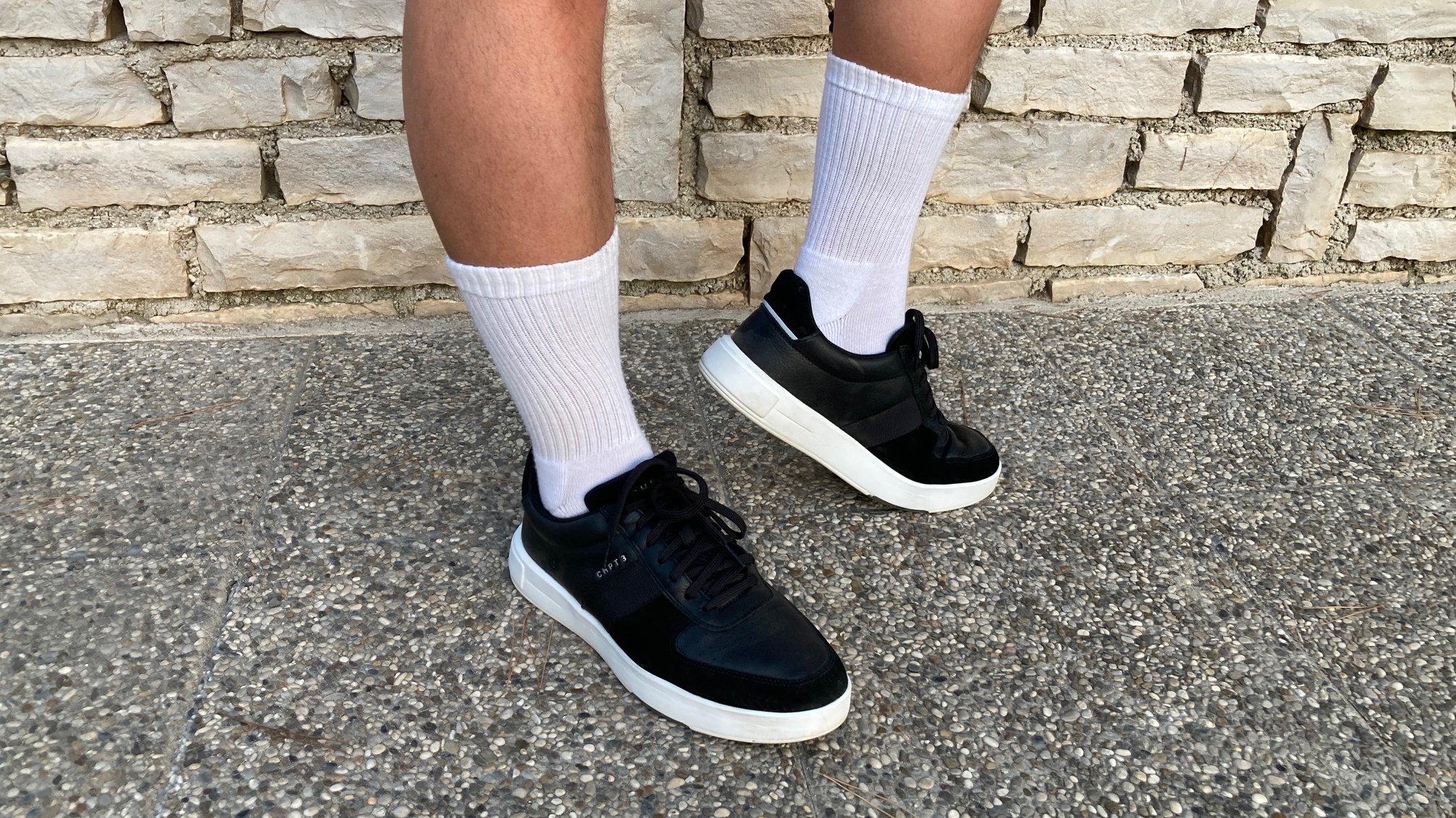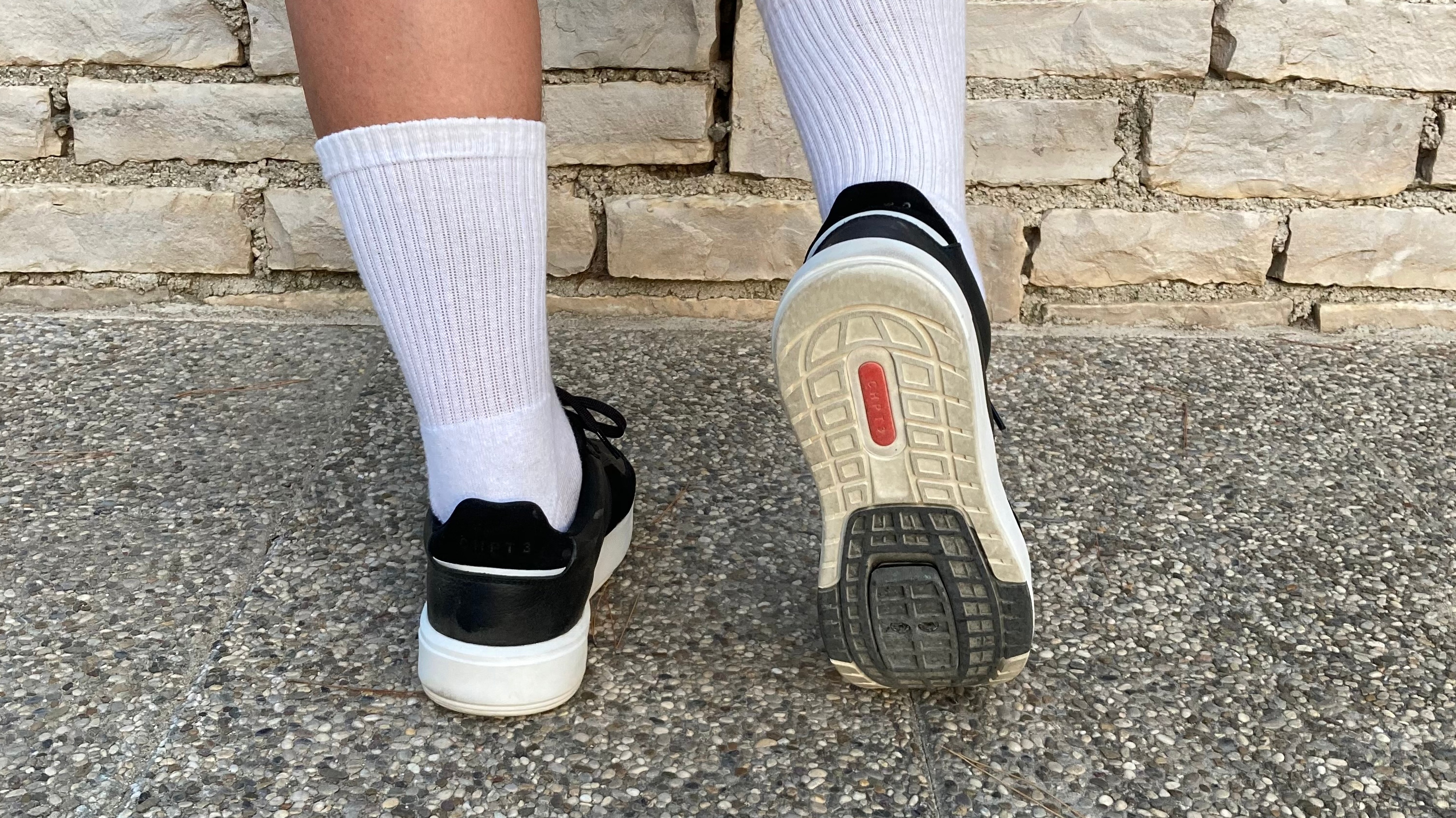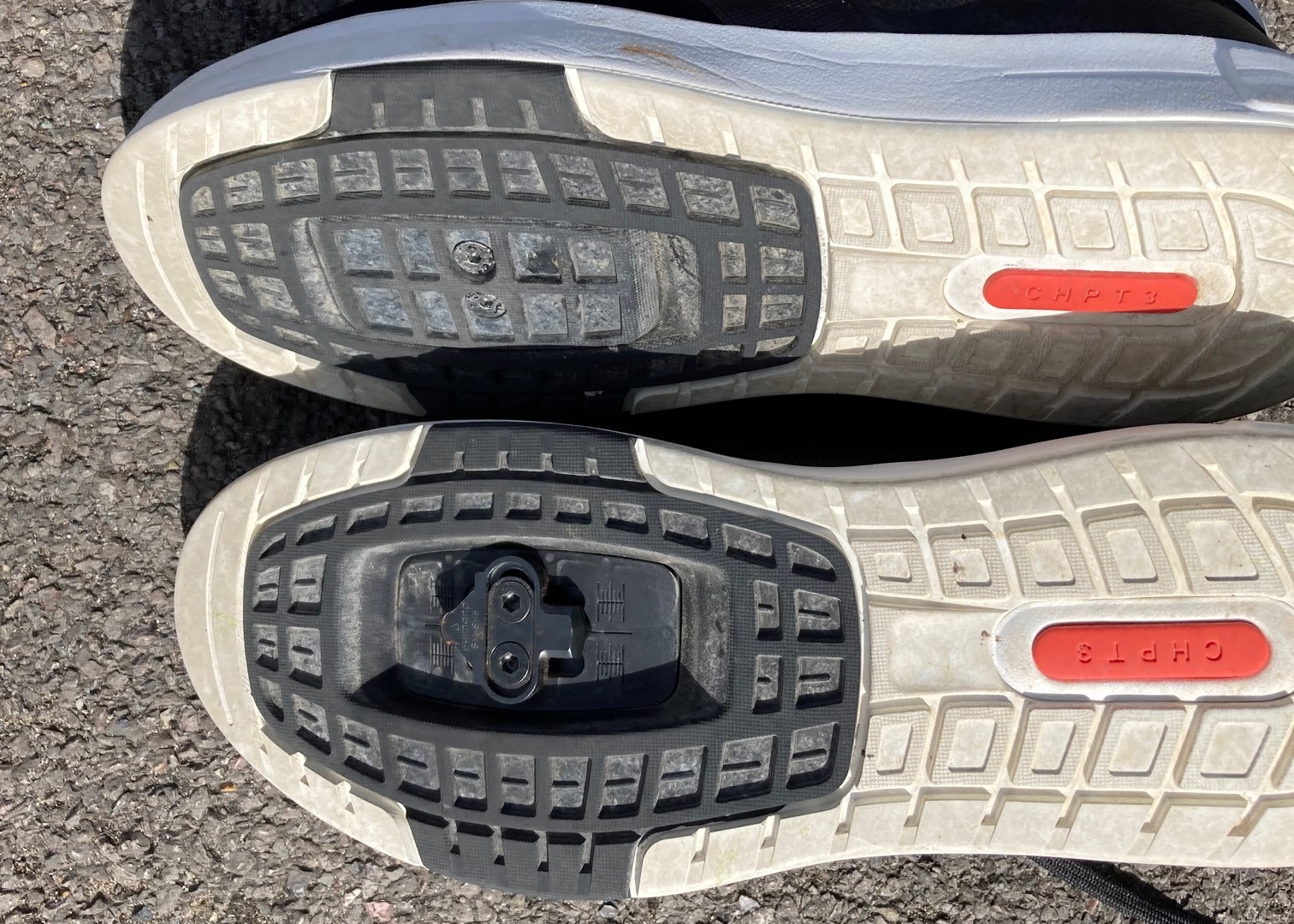
The best business ideas, so they say, come after identifying a need and coming up with the solution. That, says CHPT3 founder and head honcho David Millar, is the premise of the new Transit cycling sneakers.
The former Tour de France stage-winning pro does his fair share of urban riding these days – as evidenced by his numerous collaborations with Brompton. And as anybody who has ever ridden the few miles to the pub or to the shops knows, footwear is one of the eternal bugbears of local riding.
Millar had tried and even owned a raft of different cycling-walking shoes, he says, but found them all lacking – too great a compromise in one direction.
You can wear your cycling shoes for a comfy and efficient journey on the bike – but be prepared to skid through the door of the first establishment you visit and spend the rest of your off-bike time wishing you'd brought your trainers.
Or pull on those pumps and arrive with skinned ankle bones and your cranks missing swathes of paint. It can sometimes work – as my colleague and brother Steve Shrubsall, who once cycled from Land's End to John o' Groats in his Reebok Classics, will attest. But it's not ideal.
While Millar made his name winning Tour de France stages and still commentates on pro cycling for ITV, the Transits are rooted firmly in the urban. CHPT3 calls them 'the future of urban mobility', and as well as getting from A to B, style was also placed high on the checklist when it came to the design.
The look

Let's start with the obvious. If the idea was to produce some good-looking shoes, that brief has been nailed. These are, without doubt, some of the coolest looking items of footwear I've ever worn, on bike or off.
It's clear the aesthetic is founded in the 'urban' – these don't look like cycling shoes at all.
As you can see from the pictures, I was sent the black version of the shoe, but they also come in white. Both look just about as good as each other, I would say, though the white obviously has the potential to look grubbier sooner – especially if you're one of the 'adventurous explorers' mentioned in the launch bumf who might wish to use the shoe. Gravel riders who prefer a more casual look. If so, the black version would probably suit you better.
The black leather upper on the items I used is complemented by a touch of suede around the toe-box, colour-matched laces and a deep, white sole that features a waffle tread on the underside.
The CHPT3 branding is subtle and might even make your admiring buddies wonder if you've found a new boutique trainer brand they've not heard of.
They are stylish enough to fit in on any night on the town, with the only faintest hint of their cycling roots visible on the upper in the form of a slender reflective strip on the heel, and of course, on the underside where either the cleat, or the twin bolts securing the blanking plate will be on show.
Construction
Dig deep and you will find, at the heart of the shoe, a nylon plate buried in the midsole that takes up much of the forefoot area. This is what offers cycling-compatible stiffness to the Transit and, if you choose to use them, supports your cleats.
The plate is supported by the EVA moulded midsole, with the rubber outsole featuring that waffle pattern treat bonded to the bottom.
All this is what you might term the business end of the shoe, and it's topped off by an upper in 'luxury grade' leather, says CHPT3, with suede around the outside of the toebox. The tongue is mesh for ventilation, while the lining is textile and padded for comfort.
In use

Visually, the Transit 2.0 does an uncanny impression of a fashion trainer, but the acid test for any cycling/walking shoe is how they feel in use. Riding shoes designed to be worn off the bike too can often betray their cycling roots too obviously, making for clumsy and uncomfortable walking.
Not so the Transits. In what might be the sternest test I could've dreamed up in this respect, I took the shoes away on a non-cycling trip and spent a few days walking around cities and driving an unfamiliar rental car (manual gearbox at that).
They were pretty much ideal for the job, offering the feel of a standard leather trainer and all but indistinguishable from a dedicated non-riding shoe. There's a supportive and sturdy feel to them that you'd expect from a leather shoe with a deep sole like this, but it's a comfortable sturdiness and the textile inner cossets the foot too, adding to the comfort.
I used the Transits on the bike with both flat pedals and SPD cleats – the fitting of which is mercifully straightforward and doesn't involve cutting about your lovely new shoes.
When it comes to riding on flat pedals they were spot-on, with plenty of support and plenty of grip. The SPDs worked well too, but revealed the only chink in the Transits' armour, in that I was aware of the cleat through the sole when standing up out of the saddle. It wasn't unpleasant, but I wouldn't choose the Transits for a hilly, multi-hour trip. Flat pedal riding – and styling in out in the bar – is where they are most at home.
Value
At £195 or $235 the Transits are a premium purchase, but they look, and feel, worth that outlay. Clearly, a lot of thought and expertise has gone into the design, which has taken place from the ground up.
The market isn't exactly brimming with rivals for the Transit, which is probably part of the reason Millar was unable to find something up to the job.
Options might include the Adidas Velosamba, which is considerably cheaper at £120 ($158). The Quoc Weekend is currently on sale at £75 ($99) and is visually similar to the Transits, though chunkier and rather more cycling-esque. While the Chrome Industries Kursk are a canvas-style offering for £128 / $129







